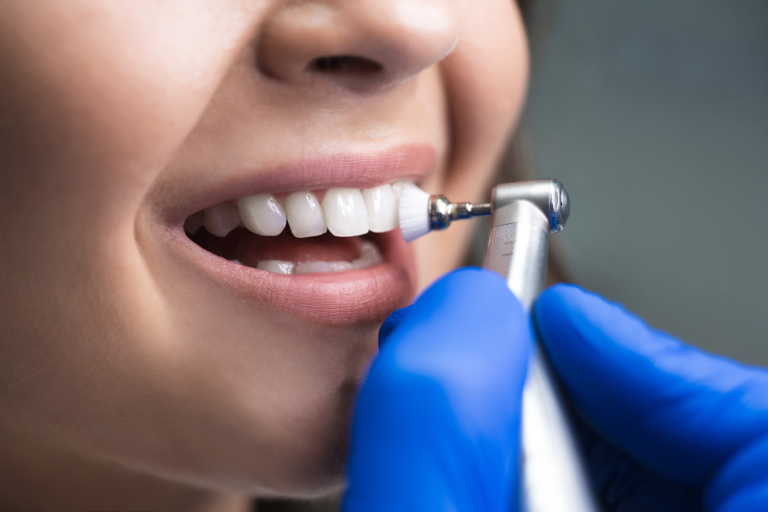Even if you brush and floss every day, nothing replaces the benefits of a professional dental cleaning. Regular cleanings are an essential part of keeping your mouth healthy, catching problems early, and preventing more serious dental issues down the road.
Still, many people feel nervous before their dental appointments—especially if they haven’t been in a while. Knowing exactly what to expect can ease anxiety and help you feel more prepared. Whether it’s your first cleaning or just your first in a long time, this step-by-step guide will walk you through what happens during a typical visit.
Why Professional Cleanings Matter
Daily brushing and flossing help remove food and plaque, but over time, plaque hardens into tartar. Once that happens, only a dental professional can remove it. Tartar buildup can lead to gum disease, cavities, and even tooth loss if left untreated.
Regular cleanings not only protect your teeth and gums but also give your dentist a chance to spot early signs of decay, infections, or other concerns you might not notice at home. If you’re looking for quality care in Melbourne, a South Yarra dentist can provide thorough, comfortable cleanings as part of your overall oral health plan.
Now let’s take a closer look at what happens during a professional cleaning.
Step 1: Initial Examination
Before the cleaning begins, your dental hygienist will take a few minutes to examine your mouth. Using a small mirror, they’ll check your teeth and gums for signs of:
- Gum inflammation
- Plaque or tartar buildup
- Tooth decay
- Cracks or worn enamel
- Any visible oral abnormalities
If anything looks out of the ordinary, they may consult with the dentist before continuing. This step helps ensure that the cleaning is safe and tailored to your needs.
Step 2: Scaling (Plaque and Tartar Removal)
Once the exam is done, the hygienist will begin the main part of the cleaning—removing plaque and tartar. This process is called scaling.
Using a special tool called a scaler, the hygienist carefully scrapes away tartar that has built up around your gum line and between your teeth. You might hear a scraping sound, which is normal. Depending on how much buildup there is, this step may take a bit longer, especially if it’s been a while since your last visit.
Some clinics also use ultrasonic instruments that vibrate and spray water to remove tartar, making the process more efficient and comfortable.
Step 3: Deep Cleaning with Gritty Toothpaste
Once your teeth are tartar-free, the hygienist will brush them with a high-powered electric toothbrush and a special gritty toothpaste. This step helps remove any leftover plaque and polishes the surface of your teeth.
The gritty texture might feel different from your toothpaste at home, but it’s completely safe when done by a professional and only used during cleanings.
Step 4: Flossing Between the Teeth
Next comes a professional flossing. The hygienist will floss between all your teeth to remove any debris or plaque that may be hiding. They’ll also check for tight spots or areas where your gums might bleed—an early sign of inflammation or gingivitis.
This step can also help show you the proper technique if you’ve been struggling to floss correctly at home.
Step 5: Rinse and Fluoride Treatment (If Needed)
After flossing, you’ll rinse your mouth to remove any remaining debris. Often, the rinse includes a fluoride solution to strengthen your enamel.
Your hygienist may also apply a fluoride treatment in the form of a gel, foam, or varnish, especially if you’re prone to cavities. Fluoride helps protect your teeth and can even reverse very early signs of decay.
Step 6: Final Dentist Checkup
Once your teeth are clean, the dentist will come in for a final examination. They’ll review your x-rays (if taken), inspect any problem areas, and discuss your overall oral health.
If there are any issues—like cavities, worn enamel, or signs of gum disease—the dentist will talk with you about next steps, such as scheduling a follow-up or additional treatments.
How Long Does a Cleaning Take?
A typical dental cleaning takes between 30 to 60 minutes, depending on the condition of your teeth and how much plaque or tartar needs to be removed. If it’s your first visit to a dentist, it might take a little longer since the team will take time to review your dental history and discuss your concerns.
What to Do After Your Cleaning
After your appointment, your mouth will feel clean and refreshed. You may notice your teeth feel smoother, and your breath fresher. It’s a good idea to avoid eating or drinking for about 30 minutes if you received a fluoride treatment, to let it fully absorb into your enamel.
Your dentist or hygienist might give you tips based on what they noticed during the cleaning—such as improving your brushing technique, using a different type of toothbrush, or addressing sensitive areas.
Making dental cleanings a regular part of your routine is one of the easiest ways to keep your smile healthy for life.
